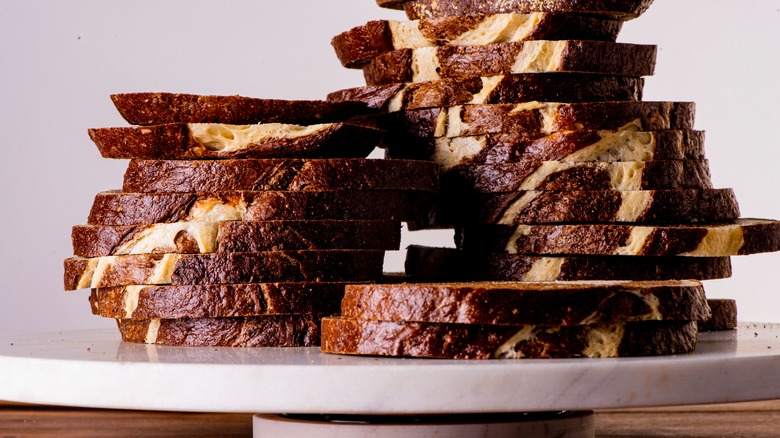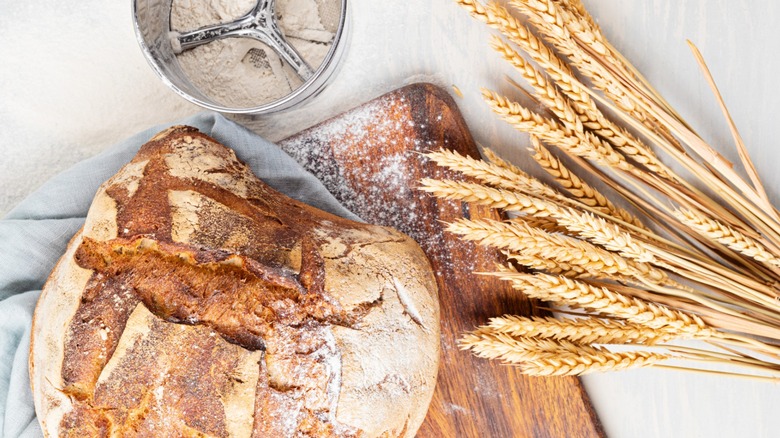The Key Tip To Remember For Perfectly Swirled Marble Rye Bread
The best part about marble rye bread isn't the nutty, softly sour taste or the way it completes a classic patty melt, it's the intricately swirled design that pops up when you slice into the loaf. Trying to get them perfectly even takes trial and error, but we spoke to an expert who has a tip for getting the best swirls in marble rye bread every time.
Marble rye's swirl isn't two different types of bread — it's two different pieces of dough that should be similar in almost every way except color. Nathan Myhrvold, the founder of Modernist Cuisine and co-author of "Modernist Bread at Home," has a tip for ensuring the two components look like one. "When making marbled rye bread, make sure that when rolling out the two pieces of dough, they are of the same thickness and shape," Myhrvold recommends. "This will help to achieve a uniform spiral in the finished loaf."
The darker swirl in the bread gets its color from caraway seeds and molasses or black cocoa powder. Although you'll initially knead the whole lump of dough together, it'll be split during the process. When this is done, make sure the dough is evenly shaped before cutting it exactly through the middle. After adding the caraway seeds, molasses, or black cocoa to the second piece of dough, place it into a loaf pan and put the lighter piece of dough into a loaf pan of the same size.
What type of flour should you use for marble rye bread?
Although dark rye flour exists and would produce the type of color necessary for the brown swirl in marble rye, it's best to stick with one type of flour. The swirled bread typically combines white rye flour with all-purpose flour or bread flour. Since the combination of rye and all-purpose flour will cause the dough to rise higher and have a lighter feel, it'll be uneven to the dark rye dough.
Even if you shape them into equally-sized loaf pans, they may not bake uniformly in the oven. Dough from rye flour also tends to rise at a slower pace in comparison to other types of flour. If the lighter piece overproofs while waiting on the darker piece of dough to rise, the bread may end up collapsing in the oven. Rye flour also creates dough that tends to be quite heavy and sticky, making it hard to knead and shape into a loaf. Although combining the rye with all-purpose or bread flour decreases that classic earthy flavor, adding molasses and caraway seeds into the mix restores some of its depth while creating a deliciously fluffy loaf.

